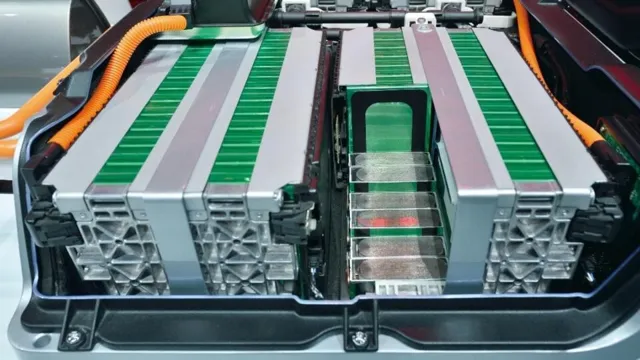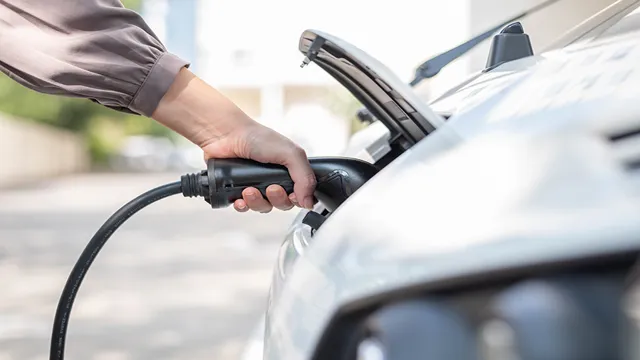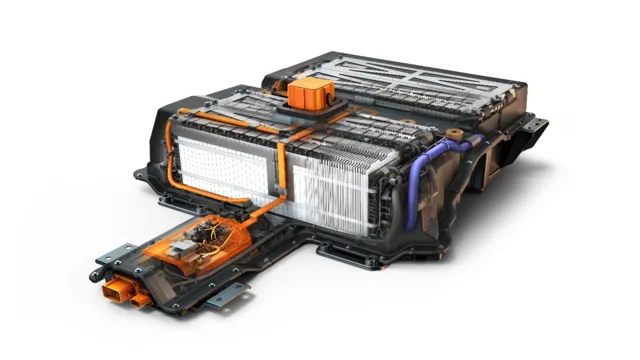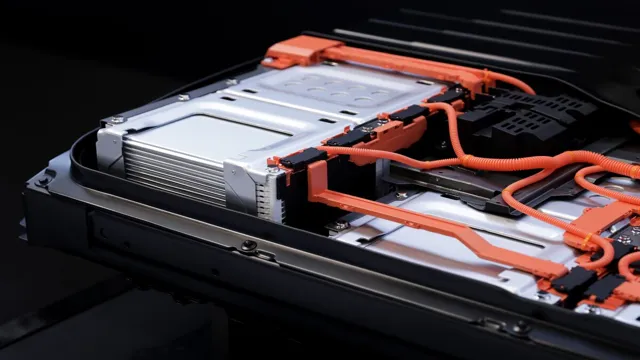Revving Up the Truth: Understanding the Battery-to-Wheel Ratio of a Modern Electric Car
Electric cars are making waves in the automotive industry, offering an eco-friendly alternative to traditional gasoline-powered vehicles. However, understanding the ins and outs of electric cars can be a bit daunting, especially when it comes to technical terms like “battery-to-wheel ratio.” Essentially, this refers to the efficiency with which an electric car’s battery converts stored energy into power that moves the car’s wheels.
And it’s an important concept to understand if you’re considering purchasing an electric car or simply want to learn more about them. So, let’s dive into the world of battery-to-wheel ratios and explore what they mean for electric cars.
What is Battery-to-Wheel ratio?
The battery-to-wheel ratio of a modern electric car refers to the ratio between the electric energy stored in the battery and the power delivered to the wheels. In simpler terms, it is the efficiency with which the electric motor converts energy from the battery to power at the wheels. A higher battery-to-wheel ratio means that more of the energy stored in the battery is utilized to actually move the car.
This ratio is affected by various factors such as the design and capacity of the battery, the power and efficiency of the electric motor, and the weight and aerodynamics of the car. For electric vehicles (EVs), having a high battery-to-wheel ratio is crucial for achieving longer ranges and better overall performance. It also means that the car requires less energy to travel a certain distance, making it more environmentally friendly and cost-effective in the long run.
Defining and explaining the term Battery-to-Wheel ratio
Battery-to-Wheel ratio is a term used in the world of electric vehicles to describe the amount of power that is transferred from the battery to the wheels. This ratio is the key factor in determining how efficiently an electric vehicle can convert stored energy into forward motion. It is crucial to note that this ratio varies depending on the type of electric vehicle.
For instance, a hybrid car with a gasoline engine and an electric motor will have a different battery-to-wheel ratio compared to a pure electric vehicle that relies entirely on electric power. The battery-to-wheel ratio is a crucial aspect of electric vehicle design and influences factors such as range, acceleration, and charging time. It is, therefore, an essential metric to consider when purchasing an electric vehicle to ensure that it meets your needs and expectations.

Importance of Battery-to-Wheel Ratio
In the modern world of electric cars, the battery-to-wheel ratio is a critical factor to consider. The battery-to-wheel ratio refers to the proportion of energy flowing from the battery of an electric car to its wheels. A higher ratio means more power is delivered to the wheels, allowing for faster acceleration and better overall performance.
The battery-to-wheel ratio can also affect the range of an electric car, with a higher ratio typically resulting in a shorter range. It is important to find a balance between power and range, depending on your driving habits and needs. A higher ratio can be beneficial for those who prioritize performance and acceleration, while a lower ratio may be more suitable for longer range and efficiency.
Ultimately, the battery-to-wheel ratio is an important consideration when choosing an electric car, and careful consideration of this factor can help you find the ideal car for your lifestyle and needs.
How battery-to-wheel ratio affects the performance of an electric car
The battery-to-wheel ratio is a crucial element in determining the performance of an electric car. It denotes the amount of power that is delivered to the wheels from the battery, and it plays a significant role in addressing range anxiety among electric vehicle users. A high battery-to-wheel ratio indicates that a significant portion of the power stored in the battery is utilized to drive the car.
This results in a more efficient and responsive vehicle that can cover more miles with less battery usage. On the other hand, a lower battery-to-wheel ratio may lead to reduced vehicle efficiency, meaning that the car will consume more battery power to travel an equal distance. Therefore, it is paramount to maintain an optimal battery-to-wheel ratio for electric vehicles to ensure the best driving performance while also increasing the longevity of the battery.
In conclusion, battery-to-wheel ratio is a critical factor that plays a crucial role in the performance and efficiency of electric cars, and optimal management of this ratio can go a long way in extending the life of electric vehicle batteries.
Battery-to-Wheel Ratios of Popular EVs
When it comes to measuring the performance of an electric vehicle, one important metric to look at is the battery-to-wheel ratio. This figure represents the amount of power that the electric motor can deliver per unit of energy stored in the battery. The higher the ratio, the more efficient the vehicle is at converting stored energy into motion.
Some popular EVs on the market today have impressive battery-to-wheel ratios, such as the Tesla Model S which boasts a ratio of 5: This means that for every unit of energy stored in the battery, the car can deliver
5 units of power to the wheels. Other EVs with impressive ratios include the Porsche Taycan (67:1) and the Audi e-tron GT (
33:1). However, it’s important to note that the battery-to-wheel ratio is just one of many factors that contribute to a vehicle’s overall performance and efficiency. Other factors such as weight, aerodynamics, and tire friction can also play a role in determining how much energy is required to move the vehicle.
Listing the battery-to-wheel ratios of popular electric cars in the market
When it comes to electric cars, battery-to-wheel ratio is an important metric to consider for understanding how efficiently the car uses energy. The battery-to-wheel ratio is essentially a measurement of how much power the electric motor receives from the battery pack. The higher the ratio, the more energy-efficient the vehicle is.
Some popular electric cars in the market right now include the Tesla Model 3, Nissan Leaf, and Chevy Bolt. The Tesla Model 3 boasts an impressive battery-to-wheel ratio of around 90%, which helps contribute to its long-range capabilities. The Nissan Leaf, on the other hand, has a ratio of around 80%.
Meanwhile, the Chevy Bolt has a ratio of around 82%, which is still quite impressive. In general, when it comes to battery-to-wheel ratios, the higher the better, as it means the car is more efficient at turning battery power into movement on the road.
Comparing the ratios to understand the performance differences
When it comes to choosing an electric vehicle, battery-to-wheel ratios play an important role in determining performance differences. This ratio refers to the amount of power that is transferred from the battery to the wheels and is key to understanding both acceleration and range. Some popular EVs with high battery-to-wheel ratios include the Tesla Model S and Porsche Taycan, which offer lightning-fast acceleration and long ranges.
On the other hand, some vehicles, such as the Nissan Leaf, have lower ratios, resulting in slower acceleration and shorter ranges. It’s important to compare these ratios when considering an EV to ensure that you’re getting the level of performance and range that you need.
Factors Affecting Battery-to-Wheel Ratio
The battery to wheel ratio of a modern electric car is a crucial factor in determining its range and overall performance. One of the primary factors affecting this ratio is the efficiency of the electric motor. An efficient electric motor requires less power from the battery to achieve the same level of performance, meaning a higher battery-to-wheel ratio.
Additionally, the weight and size of the battery pack also play a significant role in determining the battery-to-wheel ratio. Larger and heavier battery packs generally lead to a higher ratio due to their ability to store more energy. However, a larger battery pack may increase the overall weight of the vehicle, potentially decreasing its handling and performance.
The aerodynamics of the vehicle and tire selection can also impact the battery-to-wheel ratio, as they directly affect the amount of energy needed to propel the vehicle forward. Ultimately, finding the optimal battery-to-wheel ratio requires balancing these various factors to achieve the best possible performance and range while balancing weight and handling concerns.
Explaining why some electric cars have better ratios than others
One of the most important factors affecting the battery-to-wheel ratio in electric cars is the type of battery used. Lithium-ion batteries are currently the most commonly used and provide a more reliable and efficient source of energy than other battery types, such as lead-acid batteries. Another factor to consider is the overall size of the battery pack.
The larger the battery pack, the more energy it can store and the higher the battery-to-wheel ratio will be. Additionally, the efficiency of the motor and power electronics system can also affect the ratio. A more efficient system will be able to convert more of the energy stored in the battery into kinetic energy, resulting in a higher battery-to-wheel ratio.
It is also important to note that different electric car manufacturers may prioritize different aspects, such as range, performance, or affordability, which can impact the overall battery-to-wheel ratio of their vehicles. Therefore, it is important for consumers to consider their specific needs and preferences before choosing an electric car with a suitable battery-to-wheel ratio that meets their criteria.
Listing the key factors that affect the ratio
The battery-to-wheel ratio in electric cars is influenced by various factors, including motor efficiency, battery capacity, vehicle weight, and driving style. A crucial factor that determines the battery-to-wheel ratio is the electric motor’s efficiency, as a low-efficiency motor would require more power from the battery resulting in a lower ratio. The battery capacity is also a significant player in the ratio since a larger battery can deliver more power to the motor, thereby improving the ratio.
The vehicle’s weight plays an essential role in the battery-to-wheel ratio because the heavier the car, the more power the motor would require to move it, thus reducing the ratio. Additionally, driving style can also impact the battery-to-wheel ratio as aggressive driving consumes more power, draining the battery faster and reducing the ratio. In conclusion, the electric car’s battery-to-wheel ratio depends on a variety of factors that work together to determine the vehicle’s performance and efficiency.
Conclusion
In the battery to wheel ratio of a modern electric car, it’s all about efficiency and balance. Think of it like a dance between the battery and the motor – too much power in one direction and the other will struggle to keep up. But when everything is harmoniously aligned, the result is an electrifying driving experience that’s both environmentally-friendly and cost-effective.
So, whether you’re a die-hard petrolhead or a sustainability pioneer, the battery to wheel ratio is a critical component of the electric vehicle revolution that’s here to stay.”
Summing up the importance of battery-to-wheel ratio for electric car performance
When it comes to electric car performance, the battery-to-wheel ratio plays a crucial role. This ratio represents the amount of power transferred from the battery to the wheels, which directly affects the car’s speed and acceleration. Several factors affect this ratio, including the motor efficiency, the gear ratio, the tire size, and the weight of the car.
A higher battery-to-wheel ratio generally means better performance, but there is a tradeoff with the car’s range and battery life. Therefore, manufacturers strive to find a balance between these factors to optimize the car’s performance while maintaining its efficiency. Choosing the right battery-to-wheel ratio is crucial for achieving the desired performance, whether it is for a sports car or a daily driver.
Ultimately, electric car manufacturers will continue to experiment and improve the battery-to-wheel ratio to offer better performance and longer-range for their customers.
FAQs
What is the battery to wheel ratio of a modern electric car?
The battery to wheel ratio of a modern electric car varies by make and model, but it usually falls between 80 to 90 percent.
How does the battery to wheel ratio affect the range of an electric car?
The battery to wheel ratio plays a crucial role in determining the range of an electric car. The higher the ratio, the more efficiently the car converts battery power into motion, thereby extending its range.
What factors can affect the battery to wheel ratio of an electric car?
Several factors, such as the efficiency of the electric motor, the weight of the vehicle, and the resistance caused by rolling and air friction, can impact the battery to wheel ratio of an electric car.
Can the battery to wheel ratio be improved through advanced technology?
Yes, with advances in technology, manufacturers are finding ways to improve the battery to wheel ratio of electric vehicles. For instance, some vehicles now use regenerative braking technology to convert the kinetic energy of braking into electrical energy that can be stored in the battery.






